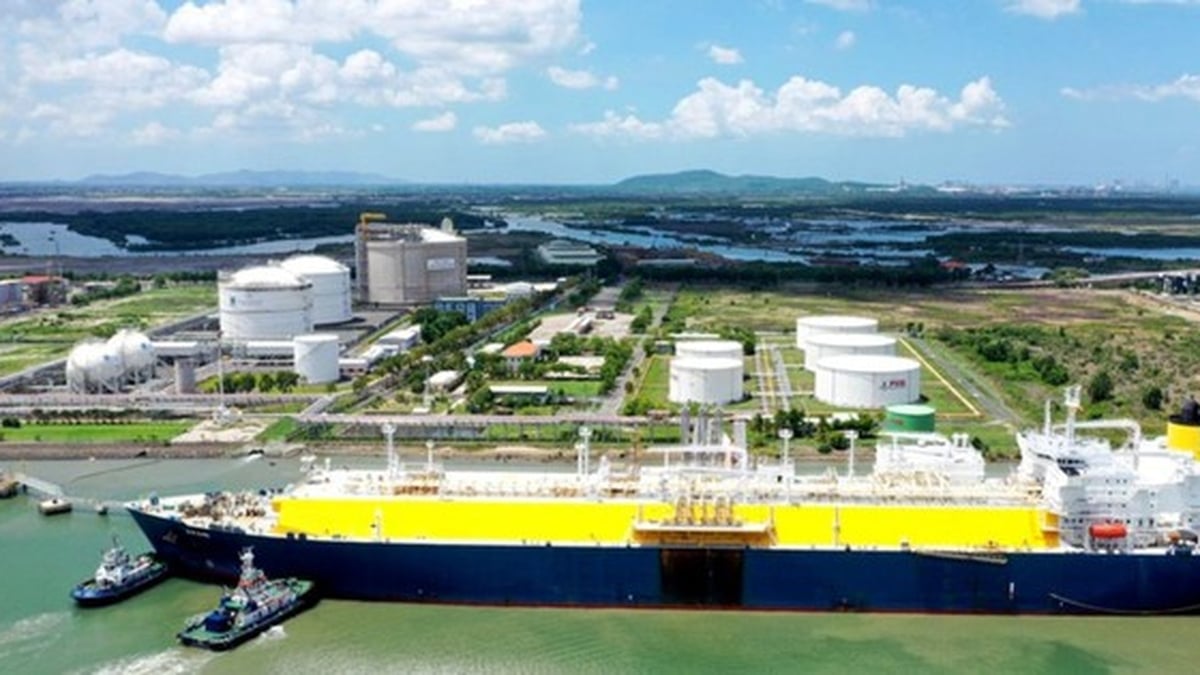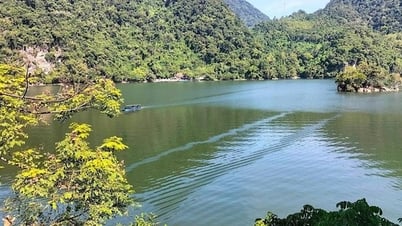
On April 17, according to information from CNN and Reuters, international astronomers discovered chemical signs in the atmosphere of the exoplanet K2-18 b thanks to data collected by the James Webb Space Telescope (JWST).
The new discovery is considered the clearest potential biomarker ever recorded outside the solar system, representing a major step forward in the search for extraterrestrial life.
Through spectral analysis, scientists discovered two organic compounds, dimethyl sulfide (DMS) and dimethyl disulfide (DMDS), molecules that are only produced on Earth through the activities of marine microorganisms such as phytoplankton. This is the first time these compounds have been detected with high precision in the atmosphere of an extrasolar planet. However, experts emphasize that this is only a potential biological signal and is not enough to conclude that there is extraterrestrial life.
Located about 124 light-years from Earth, the exoplanet K2-18 b is clearly visible at night in the constellation Leo. The planet is about 8.6 times more massive than Earth and about 2.6 times larger in diameter. K2-18 b orbits a red dwarf star in what is known as the “habitable zone,” where temperatures allow liquid water to exist on the surface.
Scientists classify K2-18 b as a hycean planet – a type of planet covered by a liquid water ocean beneath a hydrogen-rich atmosphere, which is considered to have conditions that support microbial life. Previously, the James Webb Space Telescope also detected the presence of methane and carbon dioxide in the atmosphere of K2-18 b – organic compounds related to biological activity on Earth.
Astrophysicist Nikku Madhusudhan of the University of Cambridge, who led the study published in the Astrophysical Journal Letters, asserted that “the statistical probability of detecting DMS and DMDS in the atmosphere of K2-18 b is 99.7 percent.” However, he said that independent and repeated observations would be needed to verify the results and rule out the possibility that the compounds were formed by chemical processes unrelated to biology.
According to Madhusudhan, the concentrations of DMS and DMDS detected on K2-18 b are thousands of times higher than on Earth, and there is currently no abiotic model that can explain their presence in such atmospheric conditions.
JWST’s observational data was collected using transmission spectroscopy – a method of monitoring changes in the light spectrum as a planet passes in front of its host star as seen from Earth. The telescope’s NIRISS and NIRSpec instruments detected signatures of methane, carbon dioxide and DMS in the planet’s atmosphere.
The exoplanet K2-18 b is classified as a “sub-Neptune” – larger than Earth but smaller than Neptune – which has been the most common type of extrasolar planet since the 1990s.
According to Nikku Madhusudhan, the discovery of biological markers on K2-18 b marks a significant milestone in the field of astrobiology. However, he noted that “the identification of extraterrestrial life requires consistent, repeatable evidence that is verified by independent scientific instruments and models.”
Source: https://doanhnghiepvn.vn/cong-nghe/dau-hieu-sinh-hoc-tiem-nang-duoc-phat-hien-tren-ngoai-hanh-tinh-k2-18-b/20250418095802385






























































![[Maritime News] More than 80% of global container shipping capacity is in the hands of MSC and major shipping alliances](https://vphoto.vietnam.vn/thumb/402x226/vietnam/resource/IMAGE/2025/7/16/6b4d586c984b4cbf8c5680352b9eaeb0)






































Comment (0)